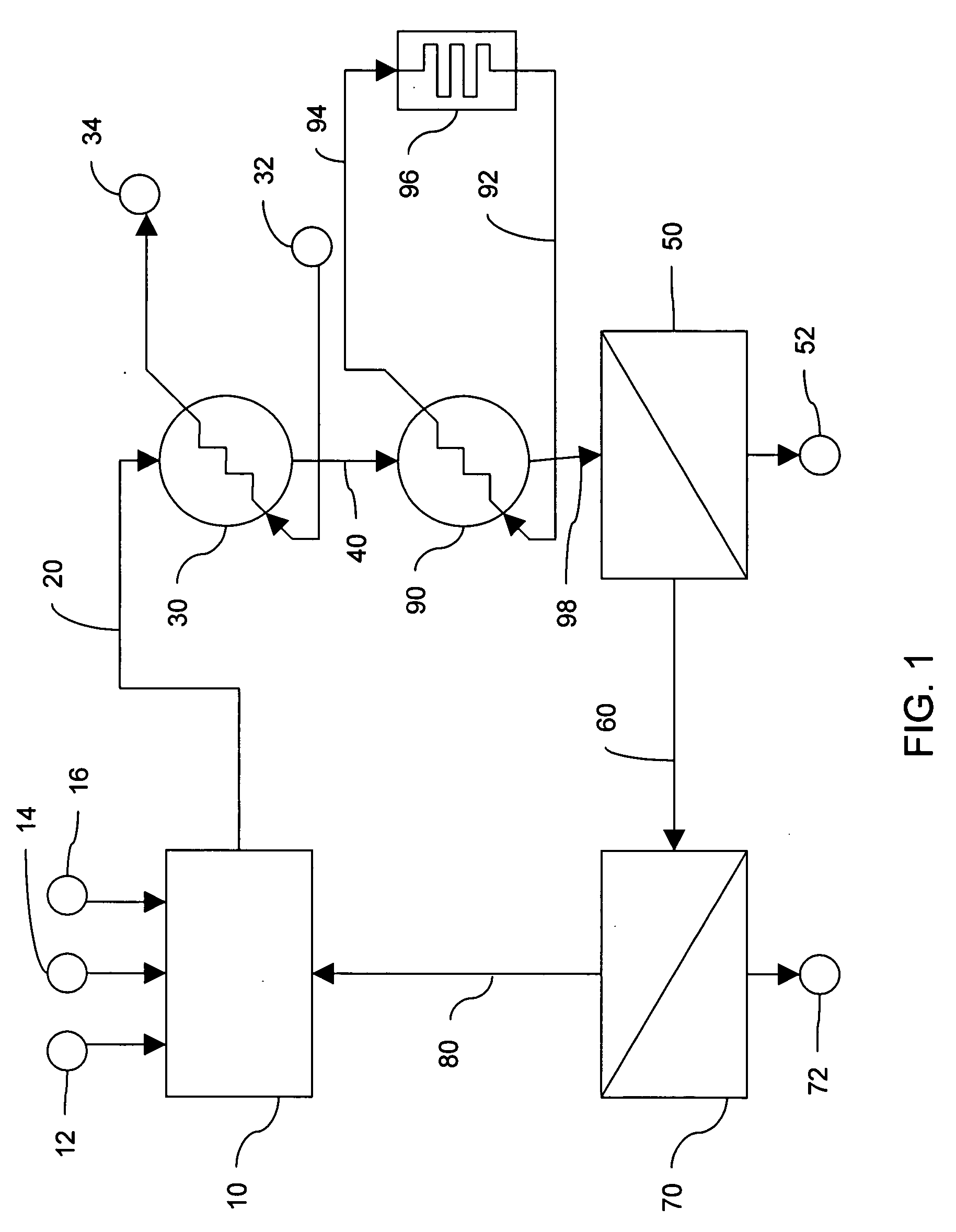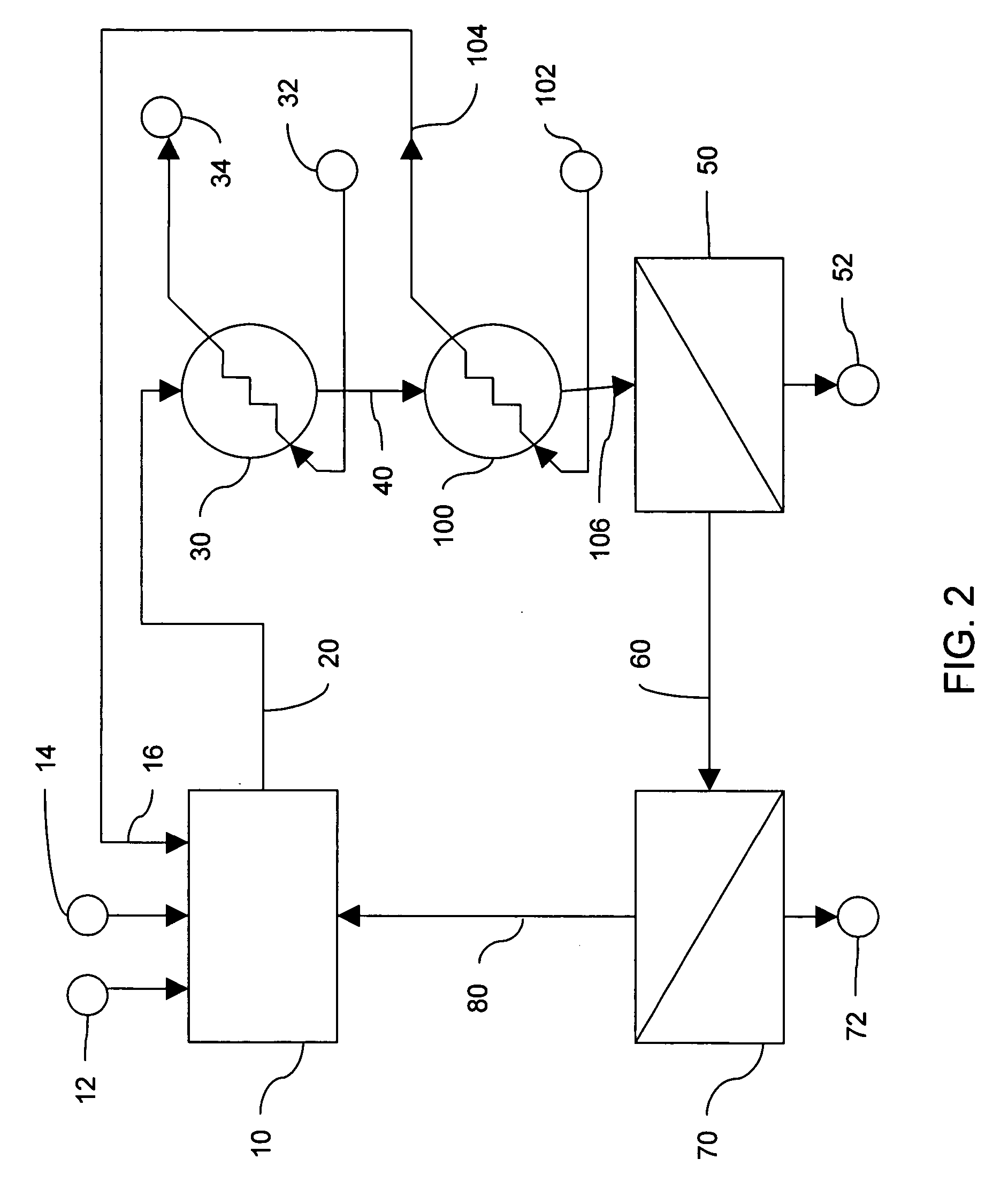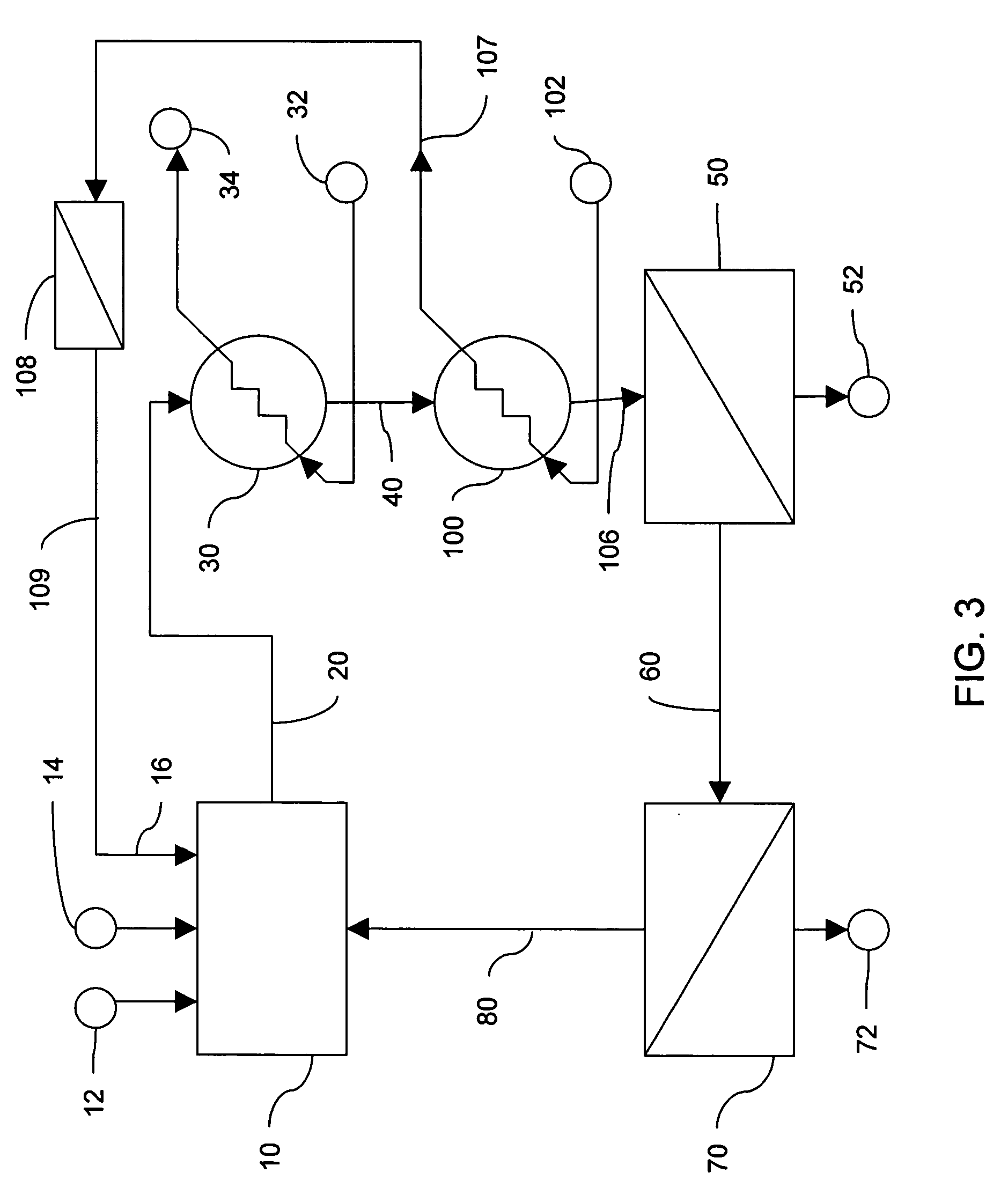Method and apparatus for cooling in hydrogen plants
a hydrogen plant and reformate gas technology, applied in the direction of lighting and heating apparatus, electrochemical generators, hydrogen separation using solid contact, etc., can solve the problems of water vapor condensation, water vapor adsorption, and the psa system's adsorbents are extremely sensitive to water vapor, so as to improve the efficiency and operability of hydrogen plants, without the penalty of high energy consumption and operational complexity
- Summary
- Abstract
- Description
- Claims
- Application Information
AI Technical Summary
Benefits of technology
Problems solved by technology
Method used
Image
Examples
second embodiment
[0043] the invention is shown in FIG. 2. The hydrogen plant depicted in FIG. 2 utilizes the same general system layout as the previous embodiment of FIG. 1. However, in the second preferred embodiment of FIG. 2, cool purified water is used as the cooling fluid which is input into the supplemental cooling system 100 at inlet 102. The output of cooling fluid in outlet conduit 104 is then input to the fuel reforming plant 10 at the purified water inlet 16. This second preferred embodiment takes advantage of the fact that purified water is supplied from a water supply that utilizes a cool subterranean environment as a heat sink either at its source or during transportation of the water, such as a municipal water supply, industrial water supply, well water supply, fresh water sources, or the like, and thus is generally cooler in temperature than ambient air during periods of hot weather. Utilizing this purified water for supplemental cooling of wet reformate enhances the PSA recovery of ...
third embodiment
[0044] the invention is shown in FIG. 3. The hydrogen plant depicted in FIG. 3 utilizes the same general system layout as the previous embodiments of FIGS. 1 and 2. However, in the third preferred embodiment of FIG. 3, cool raw water is used as the cooling fluid which is input into the supplemental cooling system 100 at inlet 102. The output of cooling fluid in outlet conduit 107 is then passed through a separate purifier 108, such as a reverse osmosis purifier, before being input into the purified water input 16 of the fuel reforming plant 10 via conduit 109. This embodiment takes advantage of the fact that raw water from a water supply that utilizes a cool subterranean environment as a heat sink, such as a municipal water supply, industrial water supply, well water supply, fresh water supply, or the like, is generally cooler in temperature than ambient air during periods of hot weather. Utilizing this water for supplemental cooling of wet reformate enhances the PSA recovery of the...
fourth embodiment
[0046] The heat exchanger of the present invention may be advantageously used to cool reformate in any hydrogen plant where local soil temperature is lower that the ambient air temperature. In the second and third exemplary embodiments, the use of the supply water, or process feedwater, can cause an undesirable reduction in thermal efficiency of the fuel reforming plant 10. This is because the purified process feedwater traveling through conduits 104, 107, or 122 is heated above its lowest possible temperature. If it is used as a heat exchange media for cooling a process stream, the efficiency of that heat exchange will be reduced. If, however, the impure waste water is used in the fourth embodiment, then the efficiency reduction does not occur.
[0047] An exemplary case is in the steam reforming process of U.S. Pat. Nos. 6,623,719 and 6,497,856 and U.S. application Ser. No. 10 / 791,746 In these processes, hot combustion product, or fluegas, is cooled by generating steam. The fluegas i...
PUM
 Login to View More
Login to View More Abstract
Description
Claims
Application Information
 Login to View More
Login to View More - R&D
- Intellectual Property
- Life Sciences
- Materials
- Tech Scout
- Unparalleled Data Quality
- Higher Quality Content
- 60% Fewer Hallucinations
Browse by: Latest US Patents, China's latest patents, Technical Efficacy Thesaurus, Application Domain, Technology Topic, Popular Technical Reports.
© 2025 PatSnap. All rights reserved.Legal|Privacy policy|Modern Slavery Act Transparency Statement|Sitemap|About US| Contact US: help@patsnap.com



